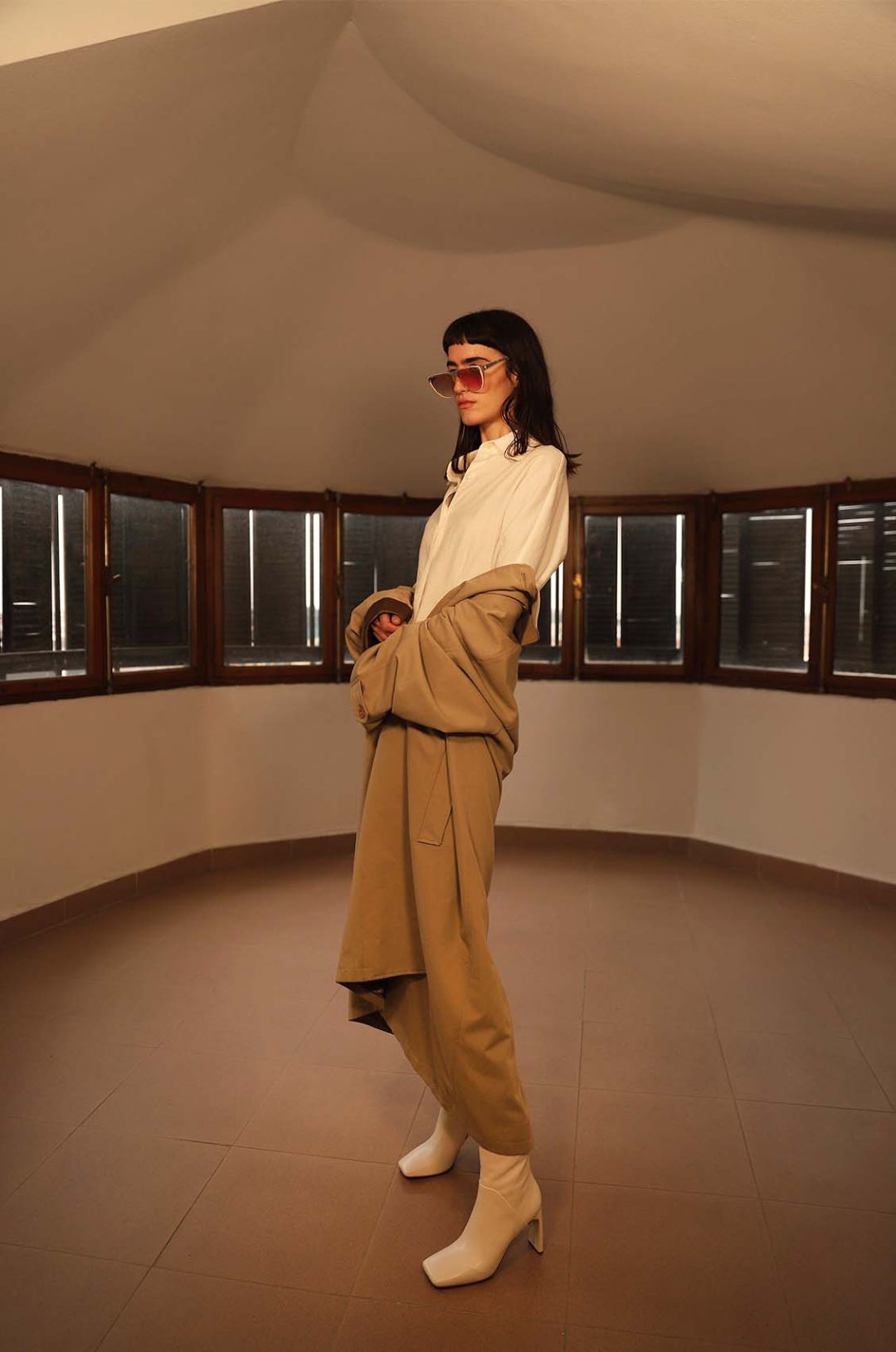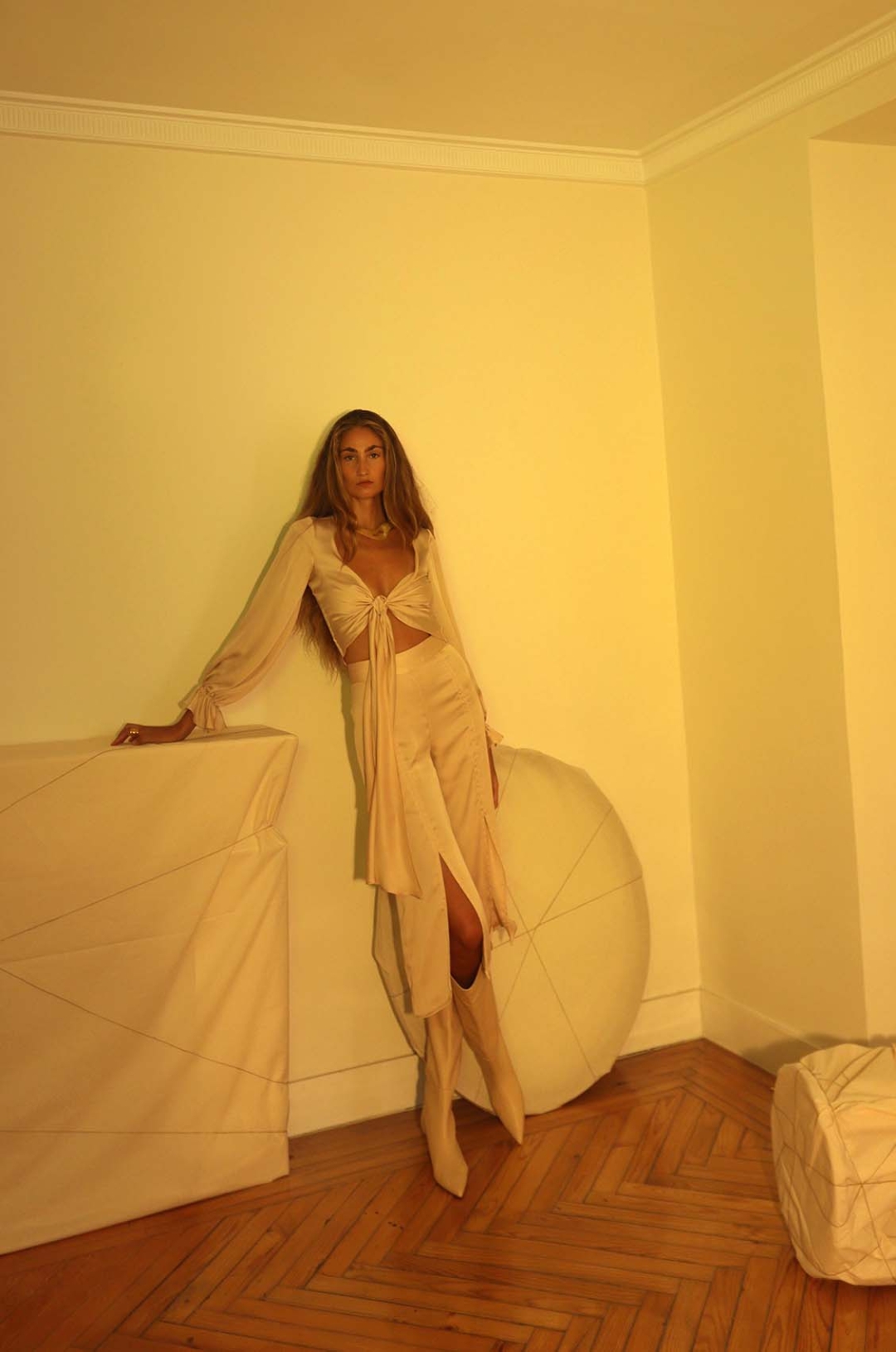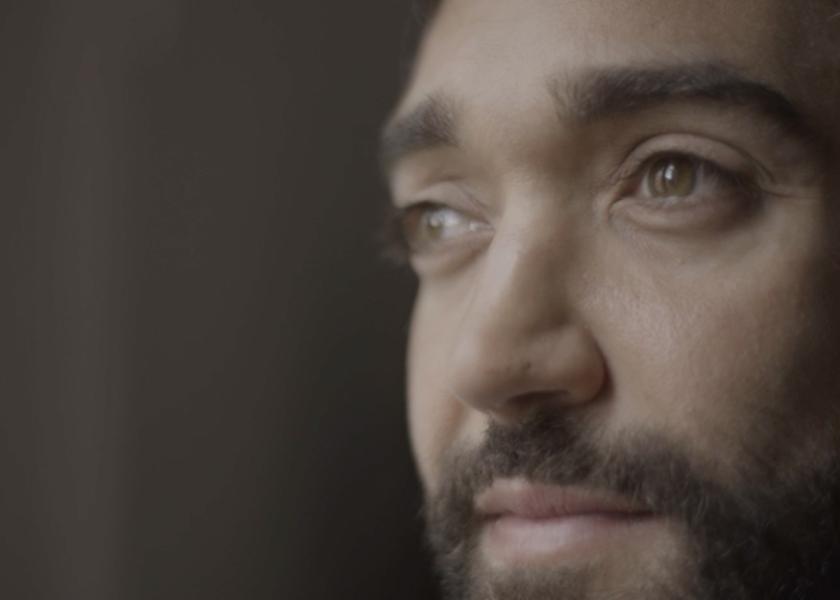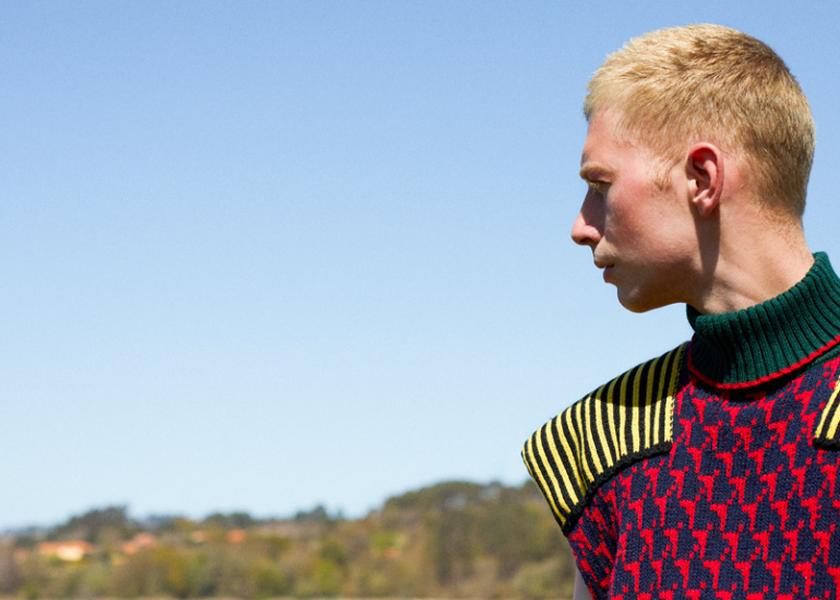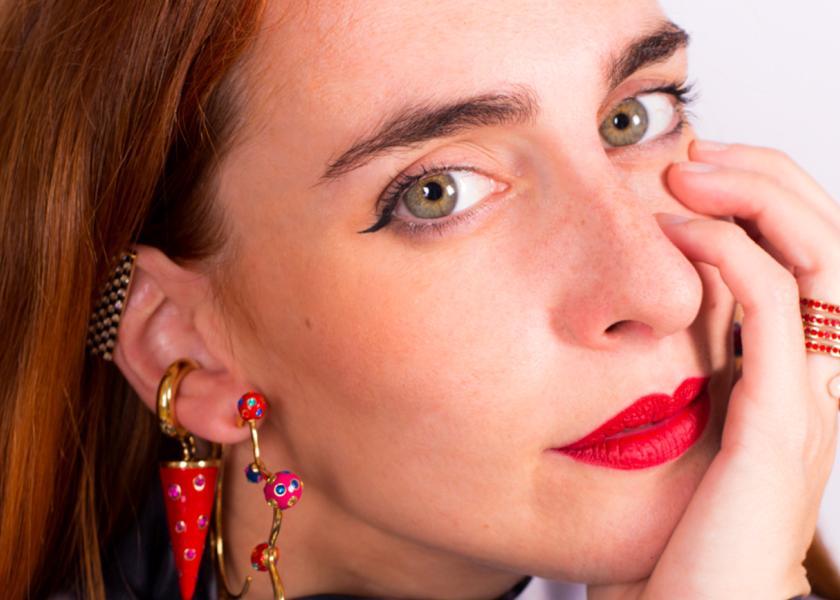Corsicana
A wardrobe by chapters
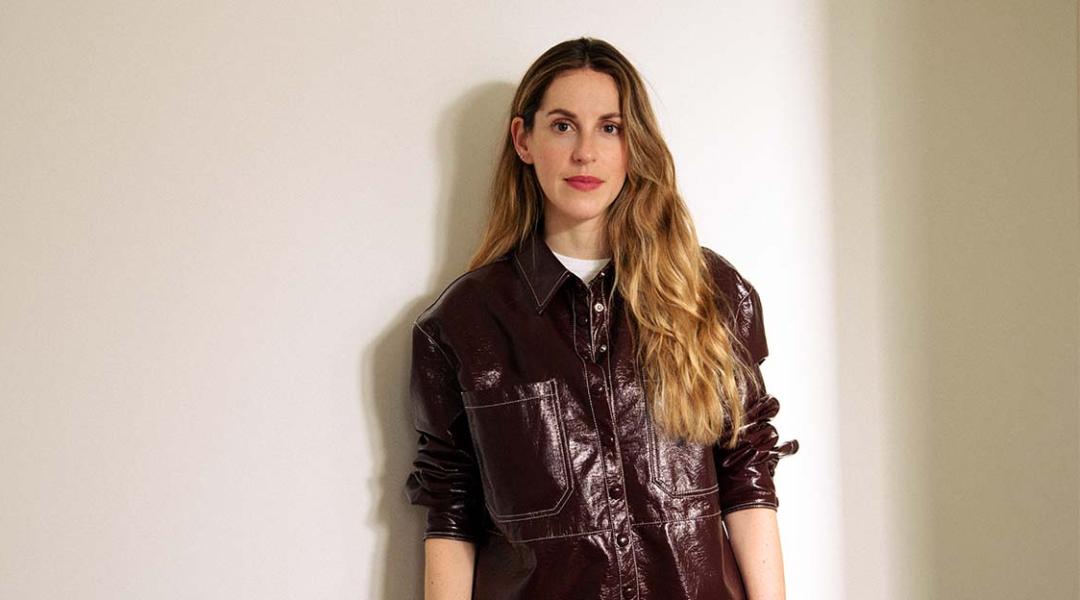
To design pieces that stand the test of time and have the capacity to transform in its wake. This is the sustainable motto of Corsicana, a brand that doesn’t believe in traditional collections, rather in fashion chapters that tell a story. The designer behind this project is Paula Currás, an architect who finds inspiration in the most unexpected places; as it happens, her grandmother’s wardrobe.
Paula Currás (Gijón, 1989) understands fashion through stories that come from places. The attraction the creator feels for scenes partially comes from her facet as an architect, a profession she combines with her role as a designer. Two fields that feed into each other and flow into a couture brand with a slow approach far from the fast pace of fashion chains.
Her narrative consists of chapters featuring essential pieces for a conscious and thoughtful wardrobe, all with the capacity to stand the test of time and even transform in its wake. This steadfastness takes root in the past and comes together thanks to its creator’s innovative approach. Its artisan production in workshops in Madrid and Asturias is the vehicle that upholds its sustainable motto. “It’s something that came about naturally, due to having the processes close by and being able to learn from them, although with time it has gained more meaning for the brand than at the beginning. Now we’re more aware that respecting certain production times and knowing where things come from is something worth appreciating,” Currás explains.
When did you start to feel connected to fashion?
Since I was little, I’ve been curious about it, I used to take notice of how other people dressed and there was a lot of talk about designers, about trends, in my family setting. But it wasn’t until I finished university that I decided to launch the brand. At that time, I was really impatient, and, during the first years of professional reality, I felt that certain projects required months, even years, and often times you couldn’t see the end result. I started to take notice of other projects with shorter timeframes, which I spent my spare time on, and started drawing things that were outside of my comfort zone and which would end up becoming the pieces in my first collection.
“Corsicana makes me feel freer because it only depends on me, on how far I want to take it”
How have your architectural studies helped you?
They’ve really helped during the inspiration and creation phases, which are quite similar processes in both disciplines, although the execution is vastly different. Corsicana makes me feel freer because it only depends on me, on how far I want to take it, and architecture helps me to rationalise and organise.
In fact, you continue working as an architect; how do you apply the talent acquired in both scenes?
Two years ago, I decided to also continue with architecture and there are certain phases within both disciplines that can feed each other. I work on architecture from the perspective of freedom and design, and this brings more inspiration and references to Corsicana, which aims to flee from rigidity.
At Corsicana you talk about “fashion chapters” instead of collections, how are they developed?
Corsicana tells stories about spaces, and I use this to narrow down the creative process. There’s a trigger, which may be an image or an impulse, and the approach is anything that inspires me —a film, a trip, an autobiographical event...—, which names the collection. The core could be a garment, a colour or something that fits the concept; and the ending, how you’d like to present it, which image, place, or song goes with it or which ambiance to give it. Out of all of this, sometimes I’m only sure about a couple of things and then I fill in the blanks until it all makes sense.
You’ve said that the source of your “fashion chapters” could be a song or an image... Which are your most recurring inspirations?
I pay attention to design and spaces, to the architectural work of Carlo Scarpa or Dario Argento’s films, for example. In fact, the ambiance of his films was a key inspiration for my first collections.
One of Corsicana’s creative arguments, “made to order”, is somehow connected to your grandmother’s wardrobe, can you explain this to us?
She made all her own clothes, but she had a very particular way of doing it. She created two patterns and then added very subtle variations, it was her way of innovating and adapting to trends. The variations were in the lengths, colours, or prints, but there were always three pieces: a skirt, a waistcoat, and a jacket. To some extent, she optimised her resources because she didn’t need more, and she felt extremely comfortable. Likewise, the efforts and excitement of making her own pieces made her appreciate them more and she only produced what she needed. For some time, Corsicana has implemented similar processes.
Does this fashion philosophy change the concept of how to dress?
In a way, yes, it’s a more thoughtful, more special gesture. Over the years I’ve become less impulsive in my purchases, that is, I still buy pieces, but the room for error has been greatly reduced and I also consume more second-hand garments. In any case, I don’t believe there’s a single fashion philosophy or that there are only certain purchasing channels that are correct, it’s more to do with how we use garments and how much life or value we give them.
“Time is becoming increasingly manic, but in the end, we like to hold onto something that will stand the test of time”
So, which are the advantages of “made to order”?
If something hasn’t been produced, it can be changed. It’s not about making something to measure, but rather incorporating slight variations into the patterns so that customers feel better represented. This degree of customisation means that garments are appreciated more.
You offer your customers a service designed to extend the life cycle of garments, is this your sustainable fashion proposal?
When you buy a PREVIO design, as we call it, you can see its future possibilities in a card that comes with it when you make a direct purchase at Corsicana. For example: a long bias-cut dress can become a short-sleeve midi by making the most of the armhole and adding some feathers. There’s no obligation to do it with us, but we do show how the design can evolve.
Right now, everyone talks about sustainability, but what attributes must this word have to give it meaning?
I believe it’s linked to the timelessness of things. I feel conflicted about their steadfastness and how quickly everything moves around us. Time is increasingly shorter, more immediate, and more manic, and we demand fast changes. But, in the end, we like to hold onto something that will stand the test of time and helps us remain connected to the earth. Therefore, sustainability must be connected to solid, honest, and transparent narratives.

